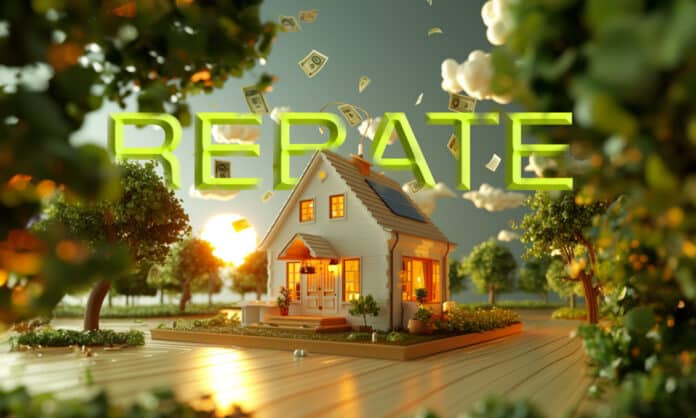Table of Contents
The Australian Solar Rebate — technically named the Small-scale Renewable Energy Scheme (SRES) — can deliver significant savings on the purchase and installation costs of renewable energy solutions that use clean power like solar panels and wind turbine systems.
If you’re eligible for the SRES, the rebate amount will vary depending on several factors, including where you live and when you complete your installation.
The eligibility requirements aren’t particularly stringent, but as with any government-run program, you must cross all your Ts.
Read on to learn more about the SRES and how it can save you money switching to solar.
What Is the Small-Scale Renewable Energy Scheme?
The small-scale renewable energy scheme (SRES) offers financial incentives for households and small businesses to adopt sustainable power solutions.
In one form or another, the SRES has been around since 2001.
It’s currently scheduled to expire in 2030.
The Australian Solar Rebate Isn’t Officially a Rebate
The Australian “solar rebate” isn’t technically a rebate at all — it’s a scheme.
A rebate occurs when a predefined sum is refunded to customers who purchase a specific item.
For example, you may receive a $20 or $50 rebate for purchasing energy-efficient appliances.
On the other hand, the Small-scale Renewable Energy Scheme (SRES) is a scheme administered by the Clean Energy Regulator that offers financial incentives through tradable certificates called Small-scale Technology Certificates (STCs).
The number of STCs a solar power system is eligible to create varies based on numerous factors:
- Geographical location
- Installation date
- Amount of electricity the system generates in milli-watt hours (MWH)
You can determine the number of STCs an eligible system can create using this calculator.
The value of STCs varies based on market forces like supply and demand.
The SRES is a government program, but it’s neither a rebate nor a subsidy.
The federal government doesn’t pay consumers or businesses for STCs they create under the scheme.
Instead, the government compels specific large energy consumers and resellers (liable entities) to purchase STCs under the Renewable Energy Target Australia regulations.

How Does the SRES Work?
The Small-scale Renewable Energy Scheme (SRES) provides a framework for consumers and businesses to reap financial benefits from installing and operating renewable energy systems.
No rebates are given.
Instead, eligible small-scale energy producers receive Small-scale Technology Certificates (STCs).
What Are STCs?
Small-scale Technology Certificates (STCs) are assigned to power producers using eligible clean energy generation systems.
The number of STCs a clean energy system can create depends on the following:
- Type of system
- Location
- Electricity production in milli-watt hours
- Date of installation
Liable entities are compelled by the federal government to purchase STCs at market value — ensuring that small-scale energy producers can always receive some benefit for the electricity their system generates.
However, the dollar value of STCs can vary significantly.
With eligible photovoltaic (PV) modules (solar panels) and a balance of system, consumers and businesses are granted an STC for each megawatt-hour (mWh) of electricity the system generates.
What is the REC Registry?
The “creation, registration, transfer, and surrender” of STCs is handled through the Renewable Energy Certificate (REC) Registry.
Commercial-scale renewable energy projects like solar and wind farms also use the REC Registry to create and administer large-scale generation certificates (LGCs).
How Do You Sell STCs?
Once a small-scale technology certificate (STC) has been successfully created and registered using the REC registry, you can sell it on the open market or through the STC clearing house.
Anyone who registers with the REC can buy and sell STCs.
If you decide to forgo the hassle of creating and administering STCs on your own, you can assign them to a registered agent instead.
Registered STC agents often sell and install solar panels and systems.
Registered agents often offer financial benefits upfront — like discounts on installation and purchase costs — in exchange for rights to create and sell future STCs.
Who Is Eligible for the Small-Scale Renewable Energy Scheme?
Businesses and homeowners in Australia are eligible for the SRES as long as the renewable energy system qualifies for the scheme.
Here’s the complete list of SRES-eligible technologies:
- Solar panels or other photovoltaic modules + a balance of system
- Wind turbines
- Hydroelectric systems
- Solar thermal water heaters
- Air-source heat pumps
For solar photovoltaic systems to be eligible, they must meet the following requirements:
- Maximum AC output of 100 kilowatts (kW) with total annual electricity production of less than 250mWh. Systems that produce more than 250mWh per annum may be eligible for large-scale generation certificates.
- Photovoltaic modules (solar panels) approved by the Clean Energy Council
- Clean Energy Council-approved balance of system components like inverters and solar batteries
How Much Can I Expect To Save With SRES?
The amount of money you can save on the purchase and installation of an eligible photovoltaic (PV) solar panel system or other small-scale renewable energy solution depends on numerous factors. Including:
- The amount of electricity the system produces
- When it was installed
- Where it’s installed
- Incentives offered by the registered agent/installer
You could save money over time on the purchase of an eligible system by creating and selling Small-scale Technology Certificates…
But if you’re looking for upfront savings, assigning your STCs to a registered agent is your best bet.
Registered agents have considerable leeway when making you an offer for your future STCs.
Usually, it takes the form of a discount on purchase and installation costs.
It’s essential to shop around for the best deal.
You can use this calculator to determine how many STCs you can generate and their approximate value over time.
Doing so can help you make a more informed decision about whether you’re better off assigning your STCs or creating and selling them yourself.
Here’s an example calculation for an average-sized photovoltaic system installed in Sydney.
Location: Sydney (Postcode: 2000)
Installation Date: 1/3/2024
Rated Power Output: 5kW
Deeming Period: 7 years
_________________________________________
Number of Small-scale Technology Certificates (STCs): 34
Over a seven-year deeming period — the maximum allowable for systems installed in 2024 — your system will generate 48 STCs.
The average price for STCs currently hovers around $40 — though, like with any commodity, it’s subject to change.
Assuming the price stays at around $40 for seven years, the gross value of your STCs would be about $1,920.
If that doesn’t seem like a lot of money vs what you have to pay for a residential solar panel system, that’s because it’s not.
It makes sense to take advantage of every federal, local, and state government solar incentive available.
Depending on where you live, the SRES may be only one of many ways to save on switching to solar.
Alongside tax credits and rebates, look into the Feed-in Tariff — a mechanism that enables you to sell excess electricity to the power grid through a bidirectional meter.
It’s essential to keep in mind that the most significant benefits of switching to solar don’t come from tax breaks or rebates.
Instead, it’s all the money you save on your electricity bills.
And the energy security from systems that utilise solar panels + battery storage.
Once your solar payback period is complete, all the money you would have spent on electricity bills stays in your pocket.
Money saved is money earned.
Frequently Asked Questions
Technically, it’s not a rebate. But, the Small-scale Renewable Energy Scheme (SRES) can save you money on purchasing an eligible solar panel system from retailers and installers. In exchange for assigning Small-scale Technology Certificates (STCs) that your system creates over time, a registered agent may offer you payment upfront — usually in the form of a discount on purchase and installation.
The number of Small-scale Technology Certificates (STCs) an eligible solar panel system can create under the Small-scale Renewable Energy Scheme (SRES) drops by one-fifteenth each year. It reaches zero by the end of 2030. The dollar value of STCs are based on supply and demand and other factors. Regardless, creating fewer STCs by waiting more than a calendar year to install a system will likely reduce your financial benefit from SERS.
The Feed-in Tariff (FiT) — also known as Net Metering — is an arrangement where you sell excess electricity your solar power system produces to the power grid. It’s a completely separate financial incentive from the Small-scale Renewable Energy Scheme (SRES). All Australian residential homes and businesses are eligible for the FiT. Participation in the SERS and FiT (or both) has no impact on the unique programs.
Final Thoughts
Just because the “Australian Solar Rebate” isn’t a rebate at all doesn’t mean that switching to solar can’t save you money.
The Small-scale Renewable Energy Scheme (SRES) is just one way to reduce the upfront or ongoing costs of investing in solar power for your home or business.
Other state and federal government incentives are available, but none outweigh the long-term return on investment of eliminating or reducing your electricity bills.
If you purchase an off-grid or hybrid system that offers solar + storage, you can also enjoy energy security during a blackout.
If you’re interested in off-grid solar for home or on the road, check out EcoFlow’s solar panels and portable power stations today.
